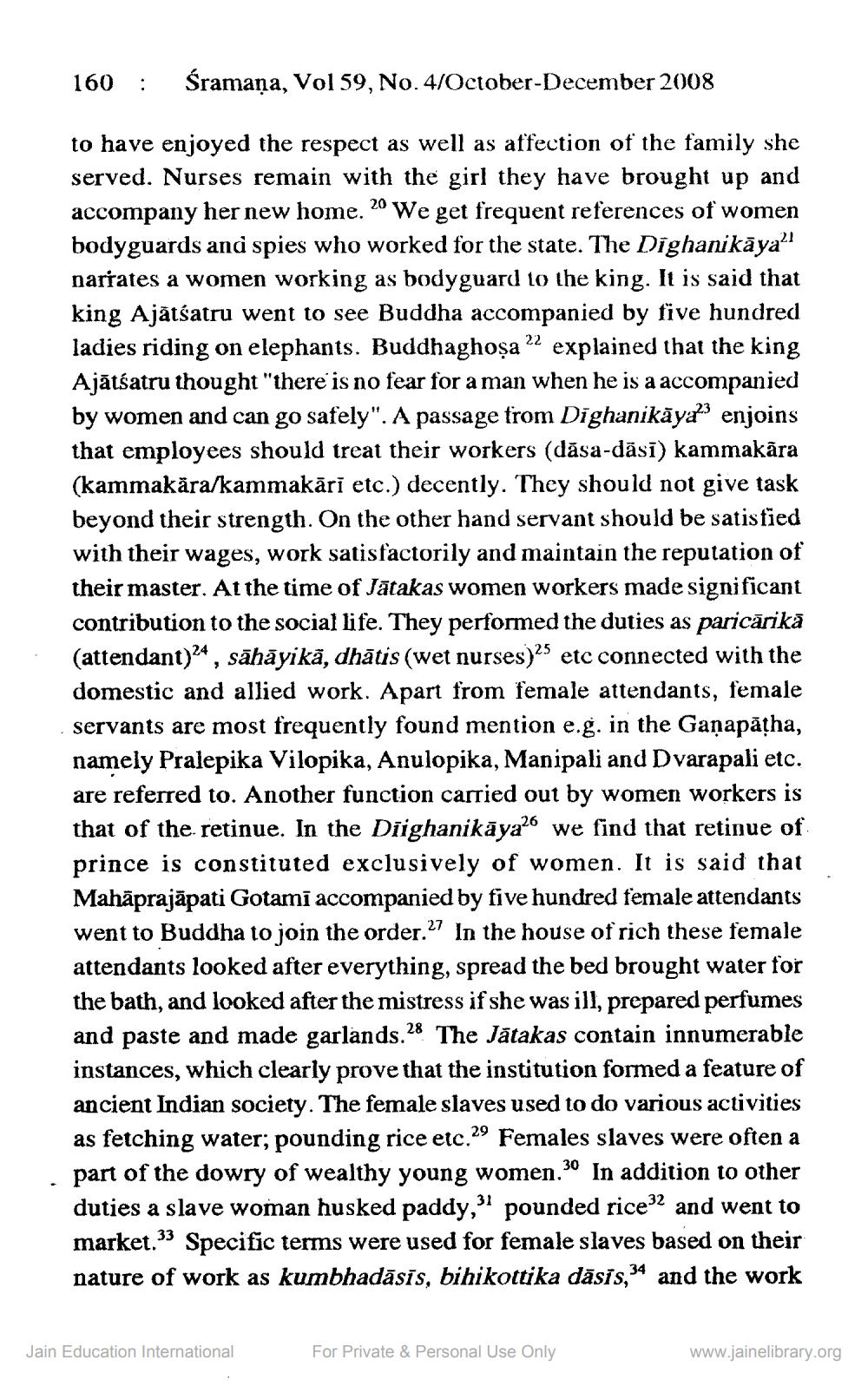________________
160:
śramaņa, Vol 59, No.4/October-December 2008
to have enjoyed the respect as well as affection of the family she served. Nurses remain with the girl they have brought up and accompany her new home. 20 We get frequent references of women bodyguards and spies who worked for the state. The Dighanikāya?! nariates a women working as bodyguard 10 the king. It is said that king Ajātšatru went to see Buddha accompanied by five hundred ladies riding on elephants. Buddhaghoșa 22 explained that the king Ajātšatru thought "there is no fear for a man when he is a accompanied by women and can go safely". A passage from Dīghanikāyats enjoins that employees should treat their workers (dāsa-dāsī) kammakāra (kammakāra/kammakāri etc.) decently. They should not give task beyond their strength. On the other hand servant should be satisfied with their wages, work satisfactorily and maintain the reputation of their master. At the time of Jātakas women workers made significant contribution to the social life. They performed the duties as paricārikā (attendant)24, sāhāyikā, dhātis (wet nurses)25 etc connected with the domestic and allied work. Apart from female attendants, female servants are most frequently found mention e.g. in the Gaņapāțha, namely Pralepika Vilopika, Anulopika, Manipali and Dvarapali etc. are referred to. Another function carried out by women workers is that of the retinue. In the Diighanikāya26 we find that retinue of prince is constituted exclusively of women. It is said that Mahāprajāpati Gotami accompanied by five hundred female attendants went to Buddha to join the order.27 In the house of rich these female attendants looked after everything, spread the bed brought water for the bath, and looked after the mistress if she was ill, prepared perfumes and paste and made garlands.28 The Jätakas contain innumerable instances, which clearly prove that the institution formed a feature of ancient Indian society. The female slaves used to do various activities as fetching water; pounding rice etc.29 Females slaves were often a part of the dowry of wealthy young women.30 In addition to other duties a slave woman husked paddy, pounded rice32 and went to market. Specific terms were used for female slaves based on their nature of work as kumbhadāsīs, bihikottika dāsis, 34 and the work
Jain Education International
For Private & Personal Use Only
www.jainelibrary.org




